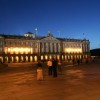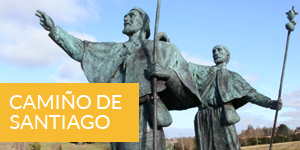- Accede I
- Regístrate I
- carrito
La Fundación de la Ciudad
En los primeros años del siglo IX (el año 813 es el más probable) el obispo de Iria Flavia, Teodomiro, por indicación de un eremita llamado Pelagio, examina el mausoleo que reconoce como el del Apóstol Santiago, basándose en la tradición oral según la cual Santiago había predicado en el "finis terrae" hispano y sufrido martirio tras su regreso a Palestina. Los discípulos Atanasio y Teodoro trajeron de nuevo su cuerpo decapitado, y para ello desembarcaron en Iria Flavia, a veinte km, y lo trasladaron hasta el monte Libredón, donde lo enterraron en un arca de piedra, dice la leyenda.
El rey asturiano Alfonso II se trasladó desde Oviedo con toda su corte y reconoció la existencia del sepulcro del Apóstol Santiago, declarándolo en ese mismo momento Santo Patrón del reino y convirtiendo el lugar en el centro de un culto capaz de aglutinar la cristiandad de Occidente frente a la expansión musulmana. La fundación de la ciudad se data en el año 830. También se construye la primera iglesia de Santiago, un sencillo templo que acogía en su interior el mausoleo de época romana.

















